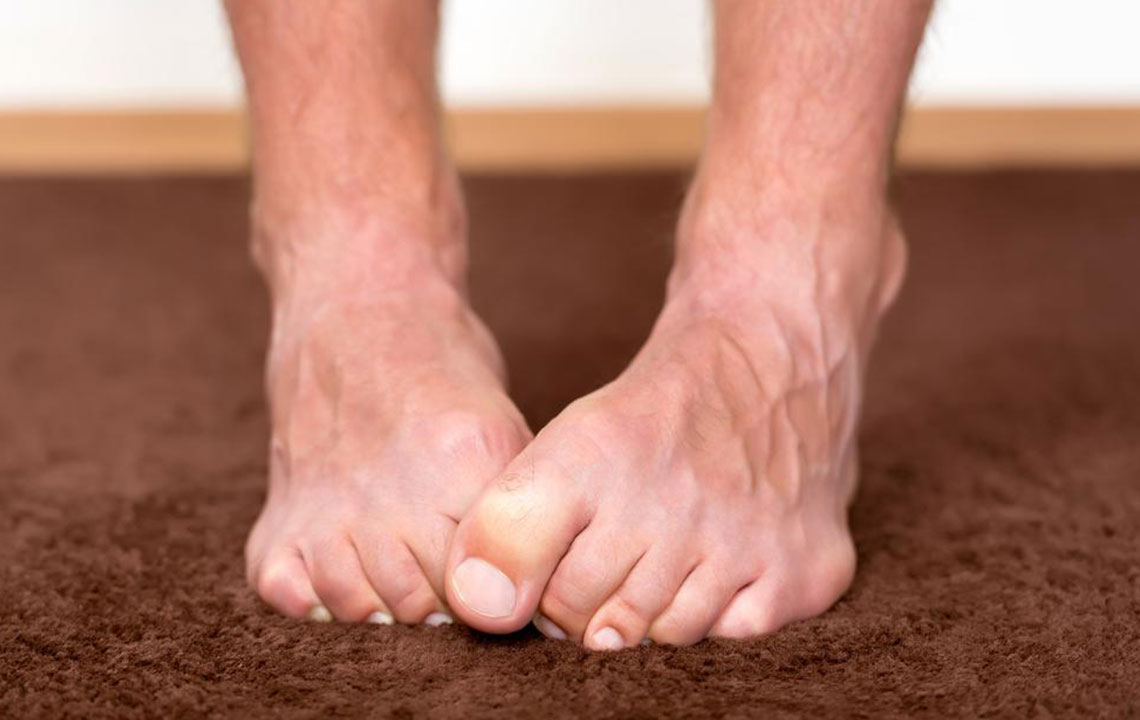Comprehensive Guide to Neuropathy: Recognizing Symptoms, Types, and Treatment Options
Explore this comprehensive guide on neuropathy, covering its causes, symptoms, classifications, and treatment options. Learn how early detection can prevent serious complications and improve quality of life. This article provides detailed insights into managing nerve damage caused by various conditions, especially diabetes, highlighting vital signs and intervention strategies to safeguard your health.

Neuropathy is a complex medical condition characterized by damage or dysfunction of the peripheral or central nerves. Given the extensive distribution of nerves throughout the human body, any injury or impairment can lead to a range of symptoms that affect daily life, mobility, and organ function. Understanding neuropathy involves exploring its causes, symptomatology, classification, and the importance of early detection to initiate effective treatment strategies.
What Is Neuropathy?
Neuropathy, derived from the Greek words "neuro" meaning nerve and "pathy" meaning disease, refers to various disorders involving nerve damage. These disorders can arise from a multitude of causes, including systemic diseases such as diabetes, infections, traumatic injuries, exposure to toxins, and autoimmune conditions. The damage can affect sensory, motor, or autonomic nerves, leading to diverse clinical presentations.
Since nerves are responsible for transmitting signals between the body and the brain, any dysfunction can result in pain, loss of sensation, muscle weakness, or dysfunctional autonomic processes. The specific symptoms depend heavily on which nerves are involved, how extensive the damage is, and the underlying cause of the neuropathy.
Classification of Neuropathy
Number of Nerves Involved: Neuropathy can affect a single nerve, multiple nerves, or widespread nerve networks. Mononeuropathy involves one nerve, polyneuropathy impacts many nerves, and some conditions involve multiple nerve groups.
Type of Nerve Fibers Affected: Damage can target motor fibers (controlling muscle movement), sensory fibers (related to sensation), or autonomic fibers (regulating involuntary functions).
Nature of Nerve Damage: Inflammation, compression, or traumatic injury can cause nerve impairment, each leading to different clinical features.
Location of Nerve Damage: Classification includes cranial neuropathies involving nerves in the head and neck, and peripheral neuropathies affecting nerves outside the brain and spinal cord.
Focal vs. Diffuse: Focal neuropathy affects a specific nerve or region, such as carpal tunnel syndrome, whereas distal symmetric polyneuropathy affects the extremities, often symmetrical in presentation.
Proximity to Central Nervous System: Conditions like radiculopathy involve nerve roots near the spinal cord, different from peripheral nerve involvement.
Recognizing Symptoms of Neuropathy
Symptoms vary depending on the nerves affected, categorized broadly into sensory, motor, and autonomic disturbances.
Motor Symptoms: Weakness, muscle atrophy, fatigue, cramps, muscle twitching, and coordination difficulties often signal motor nerve involvement.
Sensory Symptoms: Numbness, tingling, burning sensations, stabbing pain, or hypersensitivity are common, particularly in the early stages of neuropathy.
Autonomic Symptoms: These affect involuntary body functions, leading to dry mouth, abnormal blood pressure, abnormal heart rate, digestive issues, urinary problems, dizziness, sexual dysfunction, and abnormal sweating.
Early symptoms typically start with sensory disturbances, especially in the extremities, prompting the need for prompt diagnosis.
Impairment of nerve functions can also cause balance problems, increasing the risk of falls, especially in older adults.
In cases of peripheral neuropathy, symptoms usually begin in the feet and progress upward (distal to proximal), often resulting in condition worsening if ignored.
Loss of sensation in the feet increases the risk of unnoticed wounds, infections, and ulcers, which can sometimes lead to limb amputations if untreated.
Diabetic Neuropathy: A Common Form of Neuropathy
One of the most prevalent types of neuropathy is diabetic neuropathy, which results from prolonged high blood sugar levels damaging nerve tissue. It primarily affects nerves in the legs and feet but can also involve other parts of the body. Diabetic neuropathy can be classified into several subtypes, including peripheral neuropathy, autonomic neuropathy, radiculoplexus neuropathy, and mononeuropathy.
Symptoms of Diabetic Neuropathy
Peripheral Diabetic Neuropathy: Usually begins gradually with symptoms like burning pain, tingling sensations, numbness, and muscle weakness, particularly in the lower limbs. Symptoms often worsen at night, affecting sleep and quality of life.
Autonomic Neuropathy: This affects involuntary functions controlled by autonomic nerves, leading to issues such as abnormal heart rate, digestion difficulties, urinary incontinence, sexual dysfunction, and abnormal sweating patterns.
Radiculoplexus Neuropathy: Involves nerve roots and plexuses in the thighs, hips, and legs, causing severe pain, muscle wasting, and difficulties in mobility.
Mononeuropathy: Targets a specific nerve, resulting in localized problems such as carpal tunnel syndrome, facial paralysis, or eye movement issues.
If you experience symptoms indicative of diabetic neuropathy—such as persistent unexplained pain, numbness in your limbs, or wounds that refuse to heal—it is crucial to consult a healthcare professional immediately. Early diagnosis and intervention can significantly reduce the risks of severe complications, including limb loss and systemic infections.
Managing neuropathy typically involves controlling the underlying cause, such as maintaining blood glucose levels in diabetes, using medications for pain relief, physical therapy, and lifestyle modifications.
Overall, understanding the signs and symptoms of neuropathy is essential for prompt treatment. If left untreated, neuropathy can lead to significant disability, changes in organ function, and a decreased quality of life. Therefore, awareness and early medical consultation are key to better health outcomes.





